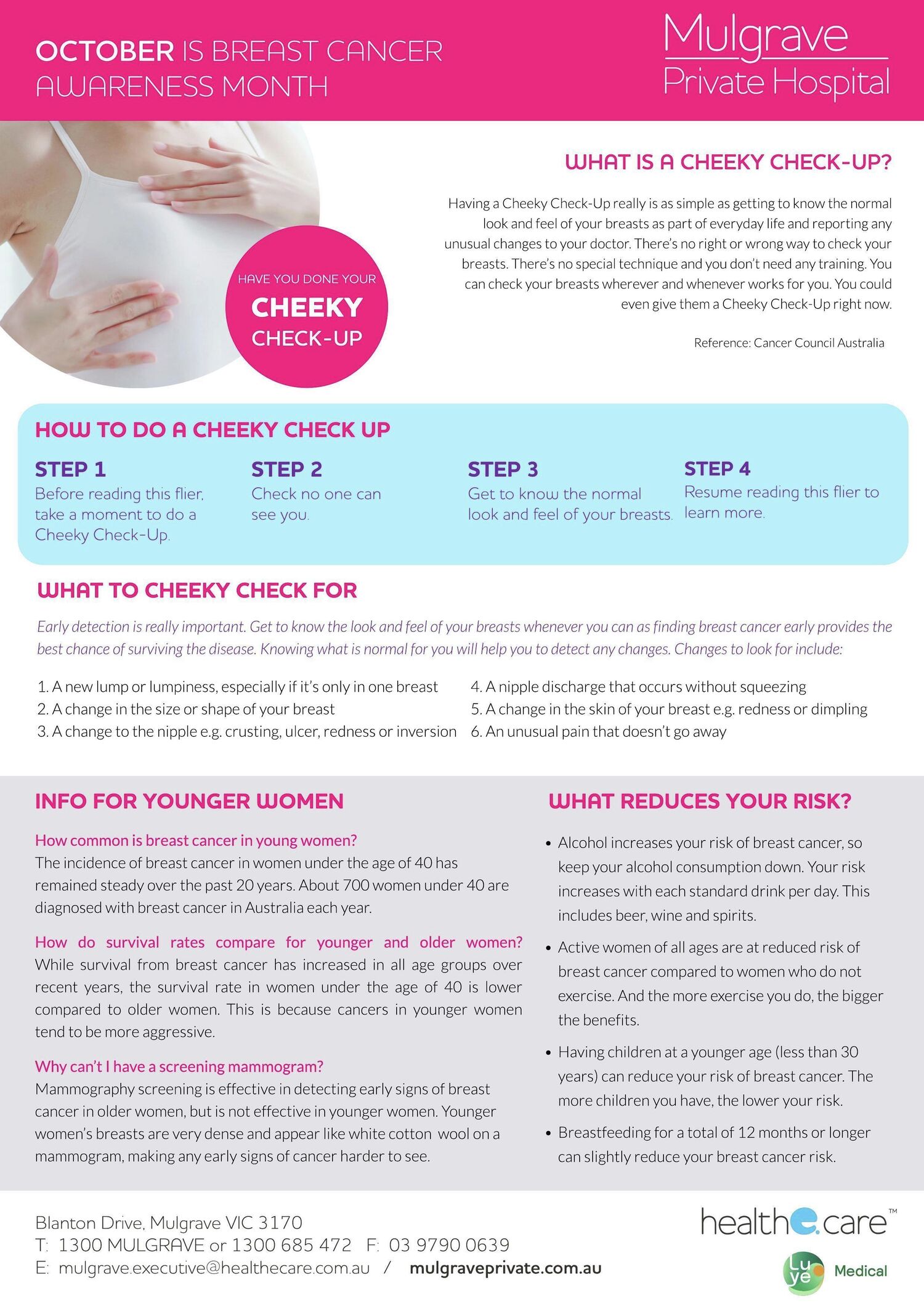Breast Cancer Awareness Month
October is Breast Cancer Awareness Month. Mulgrave Private are encouraging our staff and community to conduct a Cheeky Checkup this month.
WHAT IS A CHEEKY CHECK-UP?
Having a Cheeky Check-Up really is as simple as getting to know the normal look and feel of your breasts as part of everyday life and reporting any unusual changes to your doctor. There’s no right or wrong way to check your breasts. There’s no special technique and you don’t need any training. You can check your breasts wherever and whenever works for you. You could even give them a Cheeky Check-Up right now.
HOW TO DO A CHEEKY CHECK UP
- STEP 1 Before reading this flier, take a moment to do a Cheeky Check-Up.
- STEP 2 Check no one can see you.
- STEP 3 Get to know the normal look and feel of your breasts.
- STEP 4 Resume reading this flier to learn more.
WHAT TO CHEEKY CHECK FOR
Early detection is really important. Get to know the look and feel of your breasts whenever you can as finding breast cancer early provides the best chance of surviving the disease. Knowing what is normal for you will help you to detect any changes. Changes to look for include:
- A new lump or lumpiness, especially if it’s only in one breast
- A change in the size or shape of your breast
- A change to the nipple e.g. crusting, ulcer, redness or inversion
- A nipple discharge that occurs without squeezing
- A change in the skin of your breast e.g. redness or dimpling
- An unusual pain that doesn’t go away
INFO FOR YOUNGER WOMEN
How common is breast cancer in young women?
The incidence of breast cancer in women under the age of 40 has remained steady over the past 20 years. About 700 women under 40 are diagnosed with breast cancer in Australia each year.
How do survival rates compare for younger and older women?
While survival from breast cancer has increased in all age groups over recent years, the survival rate in women under the age of 40 is lower compared to older women. This is because cancers in younger women tend to be more aggressive.
Why can’t I have a screening mammogram?
Mammography screening is effective in detecting early signs of breast cancer in older women, but is not effective in younger women. Younger women’s breasts are very dense and appear like white cotton wool on a mammogram, making any early signs of cancer harder to see.
WHAT REDUCES YOUR RISK?
- Alcohol increases your risk of breast cancer, so keep your alcohol consumption down. Your risk increases with each standard drink per day. This includes beer, wine and spirits.
- Active women of all ages are at reduced risk of breast cancer compared to women who do not exercise. And the more exercise you do, the bigger the benefits. Having children at a younger age (less than 30 years) can reduce your risk of breast cancer.
- The more children you have, the lower your risk.
- Breastfeeding for a total of 12 months or longer can slightly reduce your breast cancer risk
